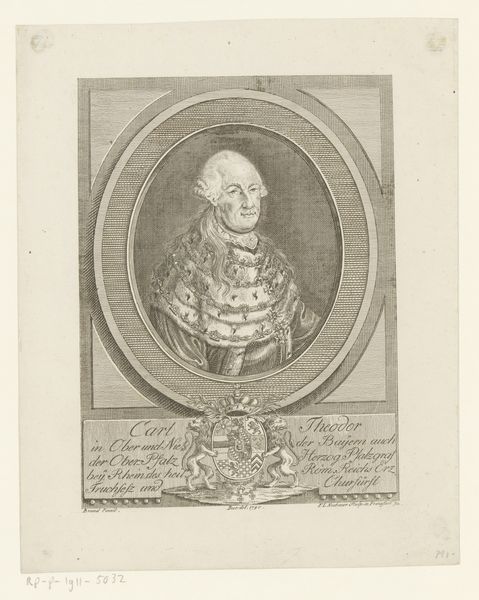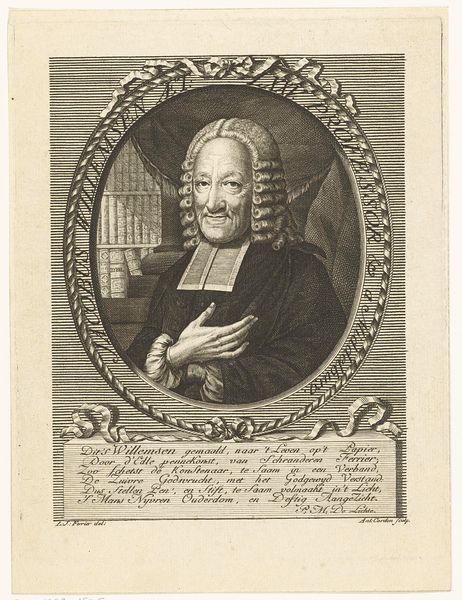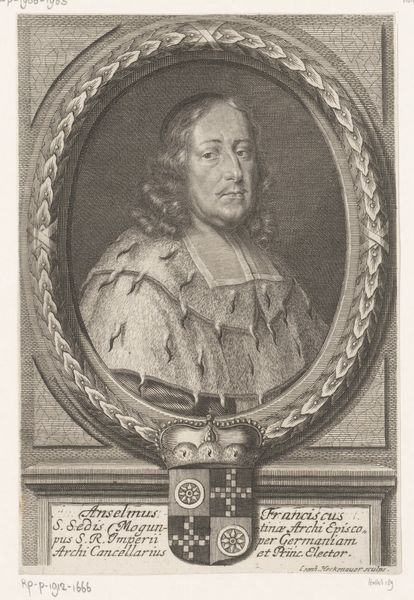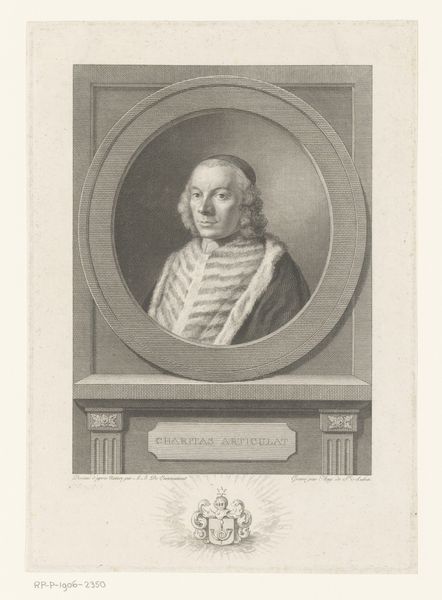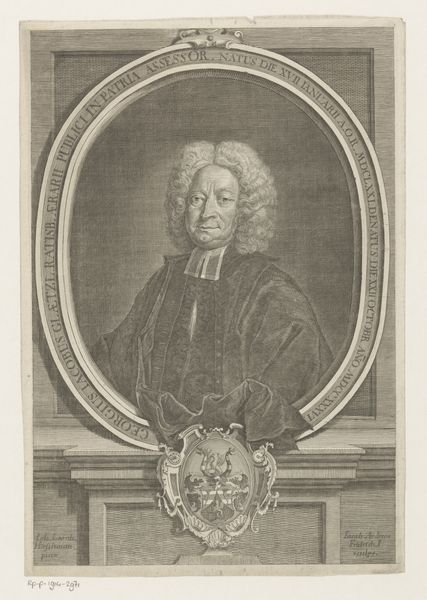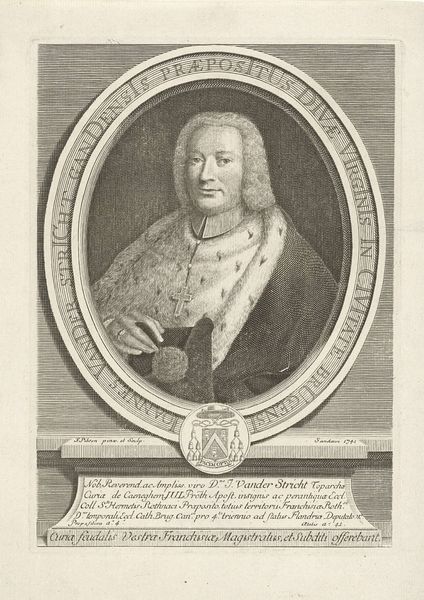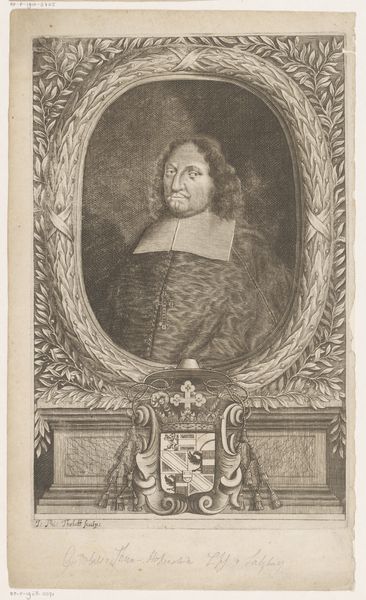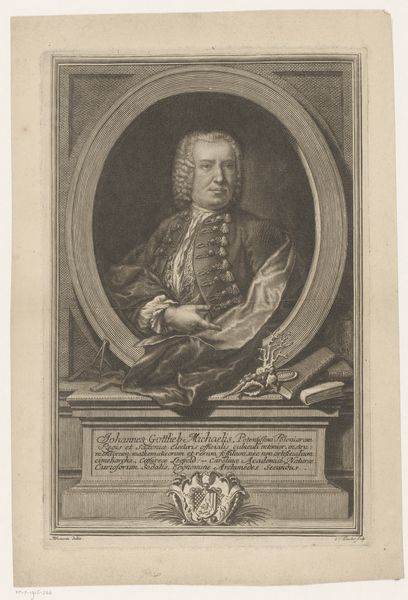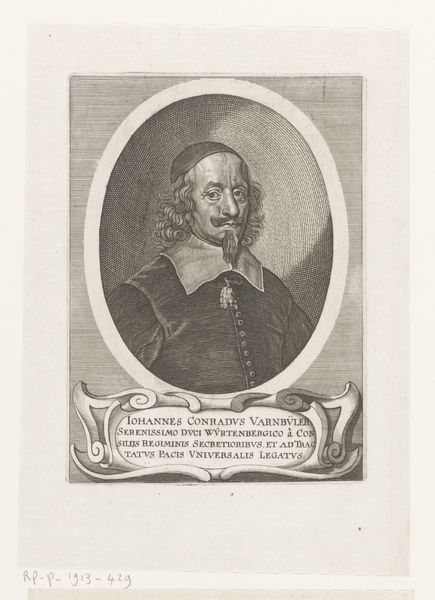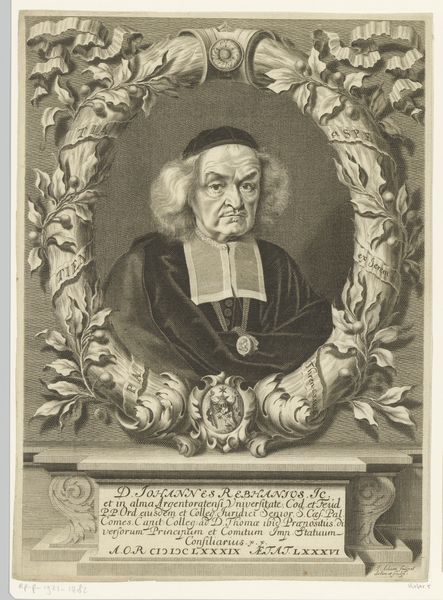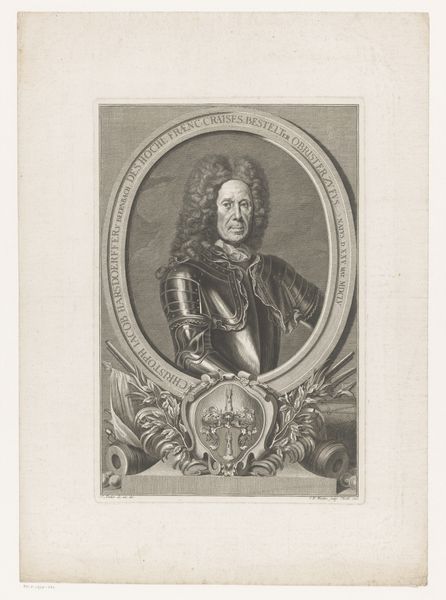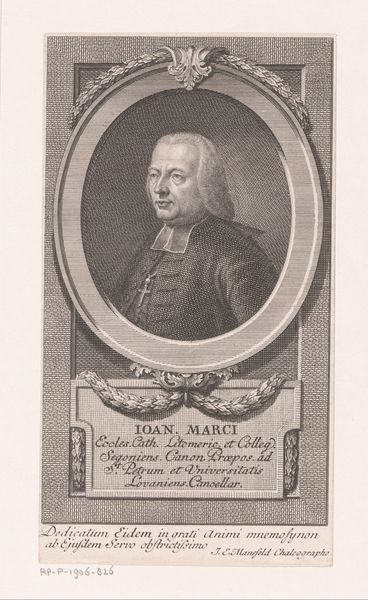
engraving
#
portrait
#
baroque
#
old engraving style
#
history-painting
#
engraving
Dimensions: height 183 mm, width 140 mm
Copyright: Rijks Museum: Open Domain
Curator: My goodness, the mood just seeps out, doesn't it? Look at those fine lines. Makes me think of whispering secrets across centuries. Editor: This engraving, likely created between 1680 and 1720, depicts Christoph Hieronymus Gugel. The artist, Johann Alexander Böner, situated this portrait within an ornamental frame that carries social and historical information, not just aesthetic flair. Curator: An "ornamental frame"... You make it sound so sterile! Look, it’s bursting with foliage, twisting around him. There’s a tension, almost like he's struggling to get out. I think its gorgeous. And it contrasts wonderfully with his somber expression. Is he important or is he sad? Or both! Editor: The foliage and inscriptions woven into the frame served to contextualize Gugel's identity and status. Note the military scene subtly depicted behind him. Given that the artwork hangs in the Rijksmuseum, we can interpret it within a specific historical and possibly nationalistic context. These portraits of powerful men in the Netherlands spoke volumes about social hierarchy. Curator: Ah, "status"...always bringing it back to the grand narrative. But I can't help wondering what stories are etched in that face. There is the family crest there... was that part of a "powerful man" in society? Was he part of military actions? He is framed by a military scene, and you mention inscriptions; do these hold significance in highlighting the power he held in society at the time? It feels so intimate, that small view of such an old face; and so separated, too, from our world now. I just get lost in it. Editor: Precisely, engravings such as these functioned as tools for historical preservation and often subtle self-promotion. The level of detail in Böner's work demonstrates his skill. What appear to us as simply “twisting foliage" are deliberate symbolic choices. In my mind, we can question how such images of masculinity perpetuate systems of power and influence. Curator: It’s true. We can get so caught up in analyzing history, or societal influence, that we forget the art staring right back at us. Editor: An analysis, regardless of angle, helps broaden our experience. Otherwise it becomes a mere decoration, or an appealing character lost in time, as if he never had any relevance to begin with. Curator: Relevance can shift and change though! We see it differently than those who were present, don't we? Maybe the greatest relevance it has is provoking these very discussions so that one can create their own opinions and narratives of how art is interpreted today.
Comments
No comments
Be the first to comment and join the conversation on the ultimate creative platform.
